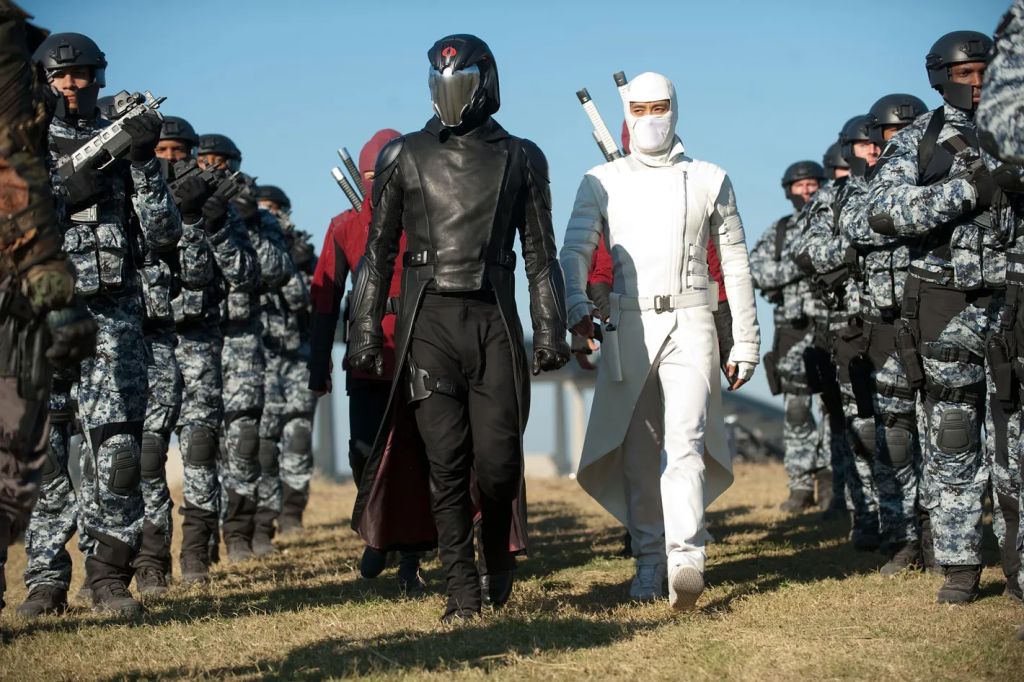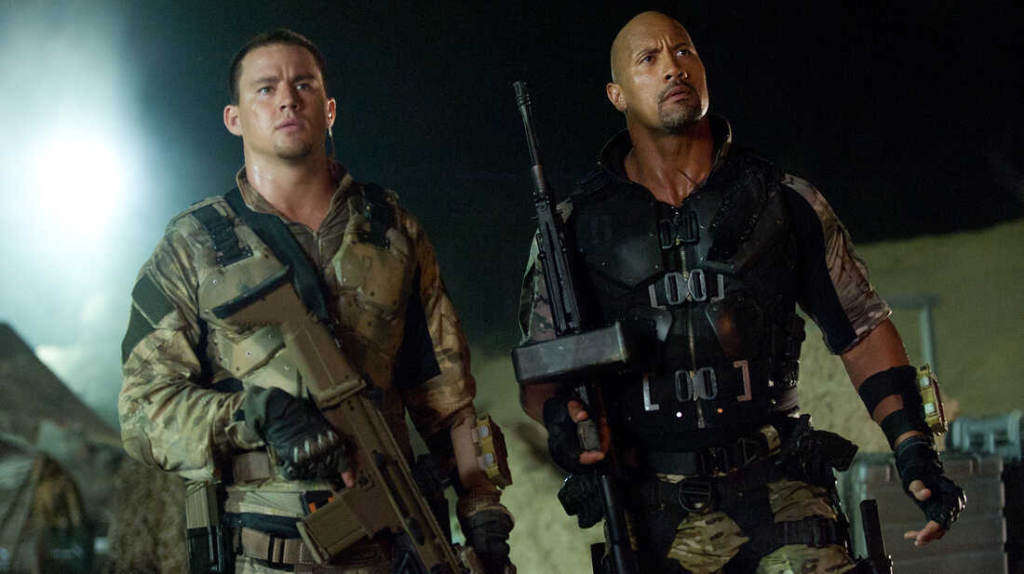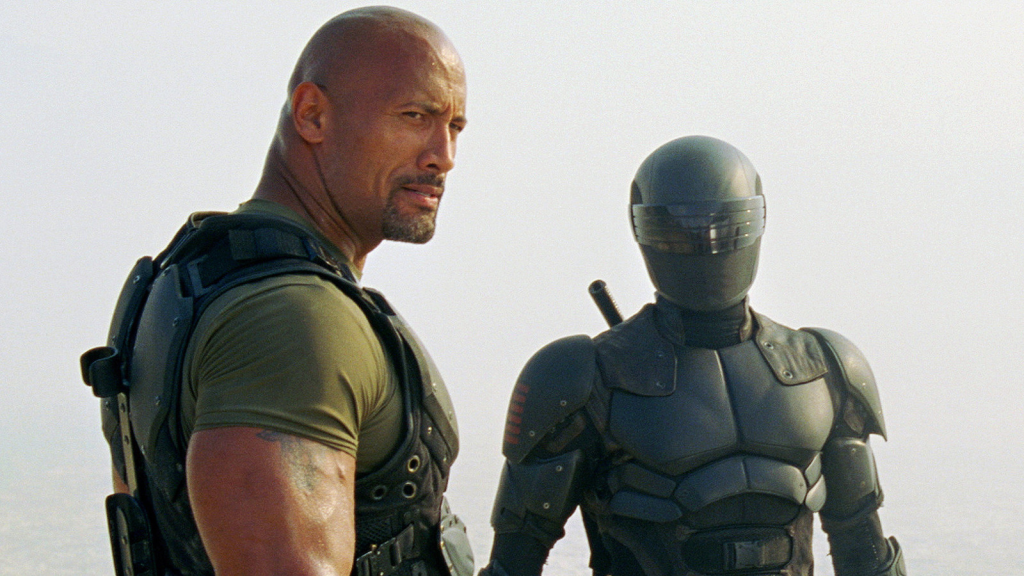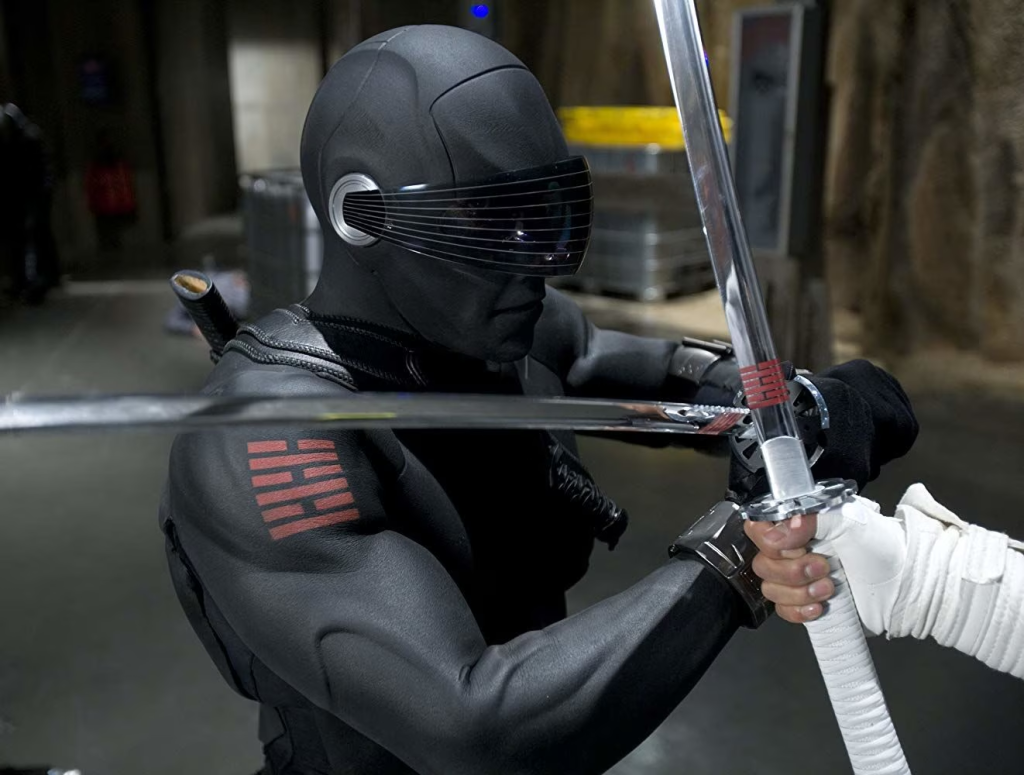G.I. Joe: The Rise of Cobra (2009): A Turbo-Charged Clash of Heroes and Chaos
Strap in for a wild ride where high-tech weaponry, secret lairs, and larger-than-life characters collide in a whirlwind of action-packed nostalgia. G.I. Joe: The Rise of Cobra (2009), directed by Stephen Sommers, catapults the iconic Hasbro toy line and animated series onto the big screen with bombastic flair. Starring Channing Tatum, Sienna Miller, Dennis Quaid, and a sprawling ensemble, this film kicks off a cinematic universe rooted in the eternal battle between the elite G.I. Joe team and the sinister Cobra organization. Packed with explosions, martial arts, and a hefty dose of CGI wizardry, it’s a love letter to ’80s action tropes that doesn’t skimp on spectacle. In this deep dive, we’ll unravel its adrenaline-soaked plot, dissect its colorful cast, explore its over-the-top style, and weigh its legacy as a polarizing blockbuster— proving that sometimes, pure fun is its own reward.
Into the Fray: The Plot Explodes
The story ignites in a near-future world where global security teeters on the edge. We meet Duke (Channing Tatum) and Ripcord (Marlon Wayans), two U.S. soldiers tasked with escorting a convoy carrying nanomite warheads— microscopic machines capable of devouring metal and flesh— developed by weapons mogul James McCullen (Christopher Eccleston) of MARS Industries. Their mission goes sideways when a lethal strike force, led by the enigmatic Baroness (Sienna Miller), ambushes them. Just as all seems lost, a crack team of operatives swoops in: the G.I. Joes, a covert international squad led by General Hawk (Dennis Quaid).

Rescued and recruited, Duke and Ripcord join the Joes’ high-tech desert base, meeting heavy hitters like Heavy Duty (Adewale Akinnuoye-Agbaje), the silent ninja Snake Eyes (Ray Park), and tech-savvy Scarlett (Rachel Nichols). Their initiation is cut short when McCullen’s true agenda surfaces: he’s secretly arming Cobra, a terrorist group bent on global domination. With the warheads stolen and Cobra operatives like the disfigured Doctor (Joseph Gordon-Levitt) and ninja Storm Shadow (Lee Byung-hun) in play, the Joes race to thwart a plot that threatens Paris, Moscow, and Washington, D.C.
The action crescendos in a Paris chase— complete with accelerator suits that turn soldiers into superhuman speedsters— as the Eiffel Tower falls to nanomite chaos. Flashbacks reveal Duke’s past with the Baroness (his ex-fiancée Ana), adding personal stakes to the carnage. The climax dives underwater to Cobra’s Arctic lair, where McCullen, now dubbed Destro, and the Doctor (soon-to-be Cobra Commander) unleash their endgame— only for the Joes to prevail, capturing Destro while the Commander escapes, setting up a sequel. It’s a rollercoaster of twists, turns, and unrelenting pyrotechnics.
Beyond the Toys: Themes of Duty and Betrayal
While G.I. Joe: The Rise of Cobra leans hard into action, it threads themes of loyalty and betrayal through its chaos. Duke’s arc hinges on duty— to his country, his team, and his lost love— driving him from soldier to hero. The Joes embody a multicultural brotherhood, their unity a counterpoint to Cobra’s fractured ambitions. Betrayal cuts deeper: McCullen’s double-dealing, the Baroness’s conflicted loyalties, and the Doctor’s transformation into Cobra Commander weave a web of deception that fuels the conflict.

The film also taps into a post-9/11 anxiety about technology and power, with nanomites symbolizing unchecked innovation. It’s not deep philosophy— this is blockbuster escapism, after all— but it gives the explosions a faint pulse of purpose, grounding the absurdity in a world where good and evil slug it out with futuristic toys.
A Squad Assembled: Performances That Pop
Channing Tatum anchors the film as Duke, his chiseled charm and earnest grit making him a relatable everyman thrust into heroism. Though still honing his dramatic chops, Tatum’s physicality shines in fight scenes. Marlon Wayans’ Ripcord brings comic relief, his quips and charisma lightening the mood, though some find his shtick overplayed. Dennis Quaid’s General Hawk is pure gravitas, a grizzled leader who commands respect with every growl.

Sienna Miller slinks through as the Baroness, her sultry menace and leather-clad swagger stealing scenes— her chemistry with Tatum adds a spark of pathos to her villainy. Christopher Eccleston’s McCullen oozes Scottish bravado, while Joseph Gordon-Levitt, masked as the Doctor, hints at a chilling future with limited screen time. Ray Park’s Snake Eyes is a silent standout, his ninja moves a kinetic highlight, matched by Lee Byung-hun’s icy Storm Shadow. The ensemble’s energy keeps the film humming, even when the script falters.
Cinematic Overdrive: Style That Sizzles
Sommers, known for The Mummy, dials the spectacle to eleven. The film’s $175 million budget fuels a visual onslaught: Paris streets erupt, Arctic ice cracks, and accelerator suits defy physics in a chase that’s equal parts thrilling and absurd. Cinematographer Mitchell Amundsen captures it all with glossy flair, from the Joes’ sleek HQ to Cobra’s neon-lit lair. The CGI, while dated by today’s standards, delivers bombast— nanomites swarm like digital locusts, and underwater battles pulse with comic-book vibrancy.
Michael B. Gordon and Stuart Beattie’s script leans on ’80s action beats— cheesy one-liners (“Knowing is half the battle!”), improbable gadgets, and a villainous cackle or two. Brian Goldner’s score amps the stakes with militaristic drums and soaring horns, though it’s the sound design— roaring jets, clashing swords— that immerses you in the fray. It’s pure popcorn cinema, unapologetic in its excess.
From Plastic to Blockbuster: A Franchise Born
Rooted in Hasbro’s 1964 toy line and the 1980s cartoon, G.I. Joe: The Rise of Cobra aimed to launch a cinematic juggernaut. Sommers and producer Lorenzo di Bonaventura cherry-picked fan-favorite characters, blending toy lore with a modern edge. The result sacrifices some depth— Snake Eyes’ backstory gets short shrift— but nails the visceral thrill of plastic soldiers come to life.

Critics savaged it, landing a 34% on Rotten Tomatoes with a 4.8/10 average, decrying its thin plot and cartoonish tone. Yet audiences embraced the ride, pushing it to $302 million worldwide— a hit, if not a juggernaut. Its 50% audience score reflects a divide: you either love its campy chaos or loathe its lack of substance. A 2013 sequel, Retaliation, followed, cementing its franchise status.
Why It Endures: A Guilty Pleasure with Guts
G.I. Joe: The Rise of Cobra won’t win Oscars, and its plot holes could swallow a tank, but it’s a masterclass in unpretentious fun. It’s a throwback to an era when action movies didn’t need to overthink— just deliver heroes, villains, and a heap of explosions. For fans of the toys, it’s a nostalgia trip; for newcomers, it’s a mindless blast. Tatum, Miller, and Park make it watchable, while Sommers ensures it never slows down. It’s flawed, loud, and proud— and sometimes, that’s enough.

Thanks for joining me on this high-octane trek through G.I. Joe: The Rise of Cobra! If you dug this breakdown, stick around for more film adventures— my reviews are packed with cinematic goodies. Drop your thoughts on the Joes below, and let me know what movie you’d like me to tackle next. Happy watching!
